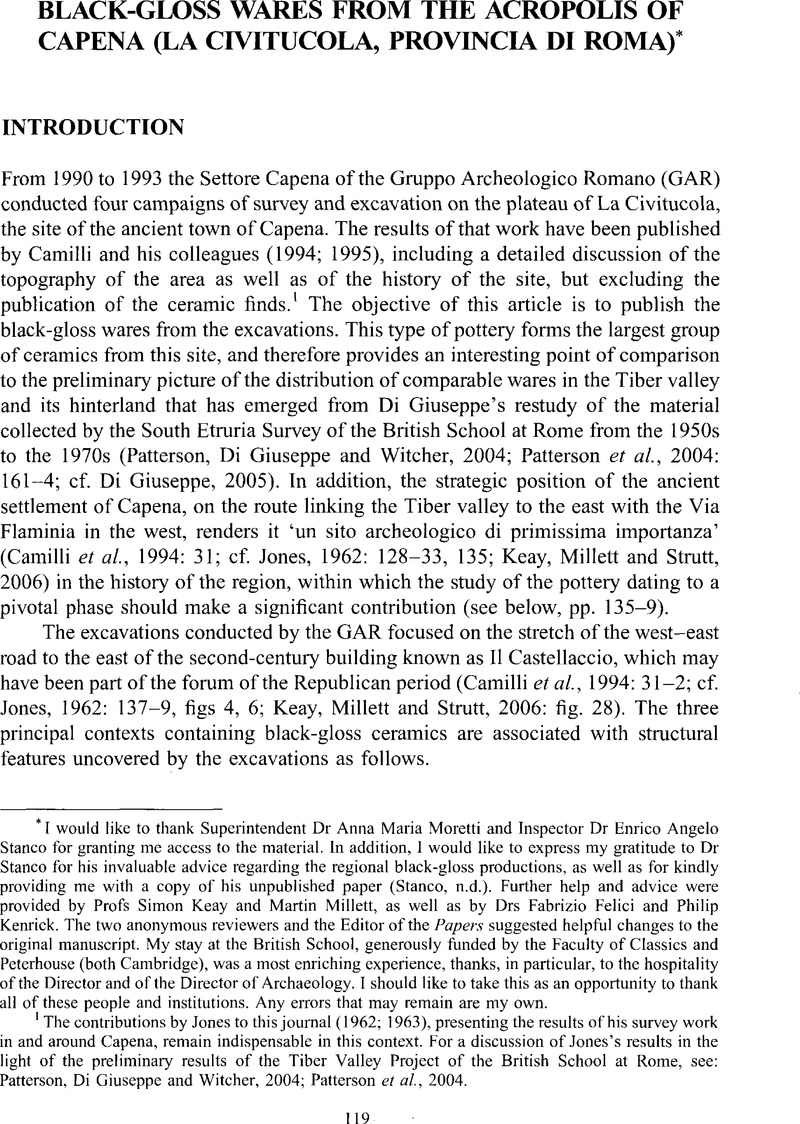Article contents
Black-gloss wares from the acropolis of Capena (La Civitucola, provincia di Roma)*
Published online by Cambridge University Press: 09 August 2013
Abstract

- Type
- Articles
- Information
- Copyright
- Copyright © British School at Rome 2006
Footnotes
I would like to thank Superintendent Dr Anna Maria Moretti and Inspector Dr Enrico Angelo Stanco for granting me access to the material. In addition, I would like to express my gratitude to Dr Stanco for his invaluable advice regarding the regional black-gloss productions, as well as for kindly providing me with a copy of his unpublished paper (Stanco, n.d.). Further help and advice were provided by Profs Simon Keay and Martin Millett, as well as by Drs Fabrizio Felici and Philip Kenrick. The two anonymous reviewers and the Editor of the Papers suggested helpful changes to the original manuscript. My stay at the British School, generously funded by the Faculty of Classics and Peterhouse (both Cambridge), was a most enriching experience, thanks, in particular, to the hospitality of the Director and of the Director of Archaeology. I should like to take this as an opportunity to thank all of these people and institutions. Any errors that may remain are my own.
References
- 3
- Cited by




